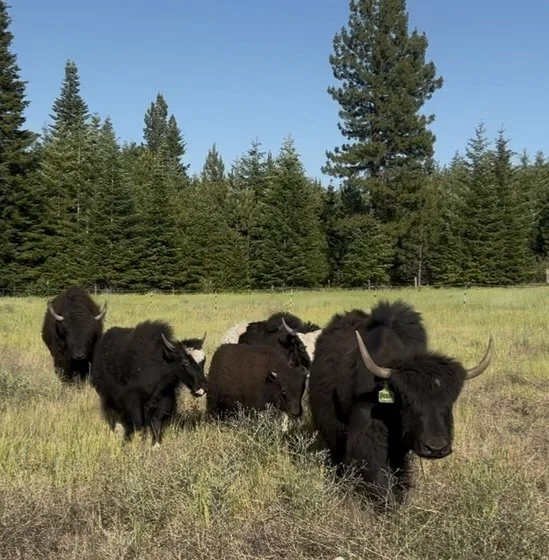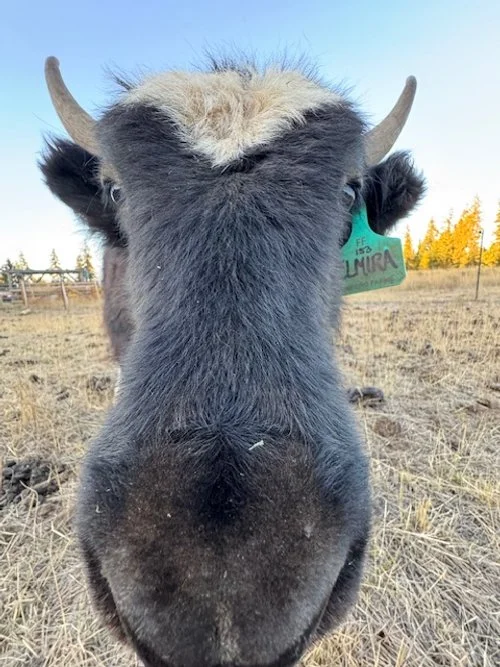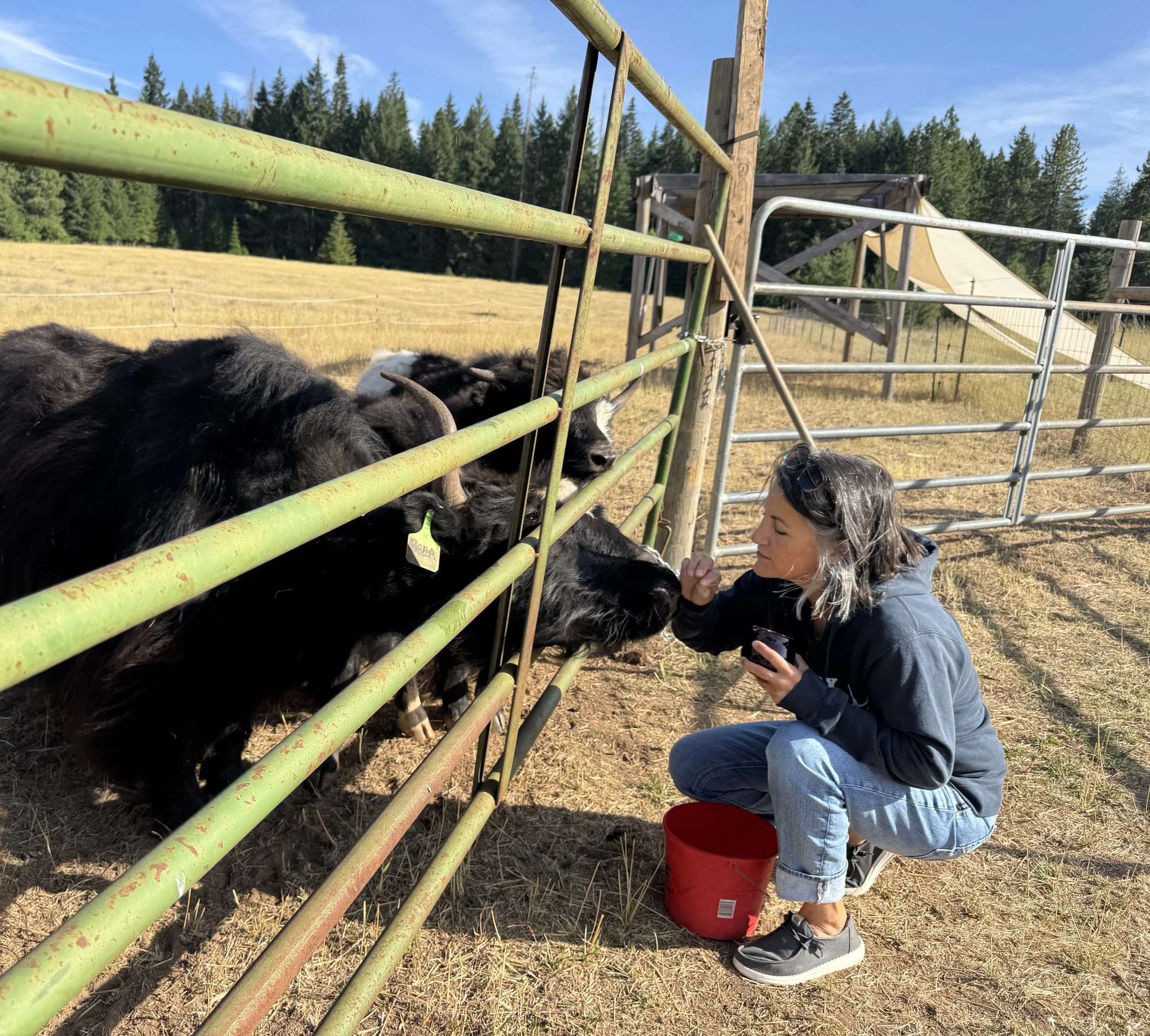Yak Facts
Yaks have been domesticated for over 5,000 years, playing a vital role in the survival of high-altitude communities across the Himalayas, Tibet, Mongolia, and Central Asia. Which is why they are right at home with us at 2,300 feet of elevation!
The domestic yak (Bos grunniens) descended from the now-rare wild yak (Bos mutus), which is larger, more elusive, and found at even higher elevations.
Most domestic yaks in the U.S. today descend from a relatively small number of animals imported between the early 1900s and the mid-1990s when importation was stopped. Today new genetic material must be developed domestically through selective breeding, with much of the work done via the North American Yak Association (NAYAK).
Our Herd
We stumbled upon these shaggy, sure-footed animals in 2020 while researching smaller bovine for our then hobby farm. As our farm dream literally grew into the 28 acres we own today, so did the desire to bring on these beautiful multi-purpose creatures.
Yaks are light on the land weighing roughly 1/3 of a typical cow, meaning less compaction and disruption of our delicate soil, root and microbial systems.
Being efficient grazers, yaks do well in our low-input pasture system with their manure being the main input we rely on to add help boost our soil.
Each yak has a very distinct appearance as well as disposition. Here’s what you can expect when you visit the yaks…
Bella: AKA the Cookie Monster, is our herd leader. She’s always first in line for treats and has the herds daily agenda dialed in.
Zak: Bella’s calf born March of 2024 is currently sure to be right by her side, ducking under and in to make sure he doesn’t miss any snacks either. Especially in the evening, Zak loves to kick up his heels and get the whole herd fired up with play battling. It’s so much fun to watch!
Elmira: Is the silent hear stealer. The white heart on her forehead matches the absolute sweetness she embodies. She gently takes snacks and has caught on that sometimes there are still snacks to be had when she “checks in” with us in the pasture.
Rosanna and Emma: Are our shy Royal beauties. They both have beautiful coats with lots of white but prefer to hang in the back or sneak in for a snack when none of the others are looking.
Selene: Selene came on in September ‘25 when we expanded the herd and is currently our only Imperial Trim. Her smaller stature and grey muzzle instantly won us over.
.






